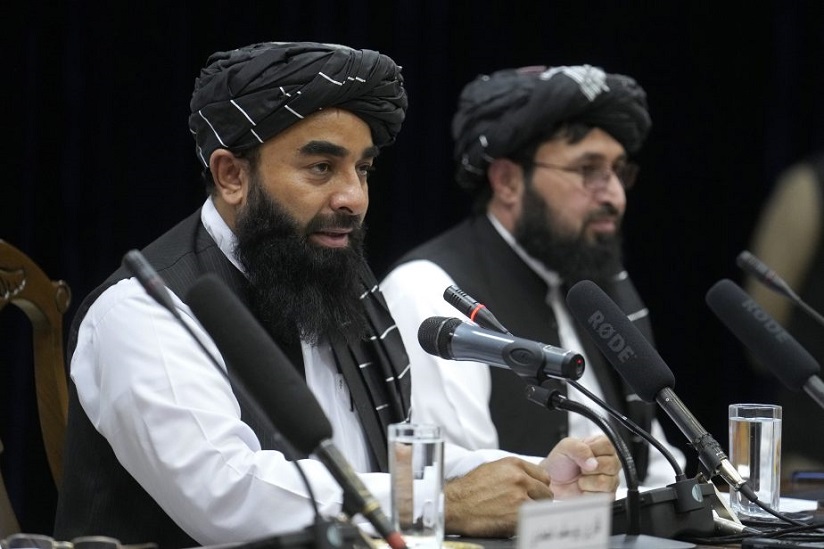
The religious movement’s return to power in Kabul hasn’t been the nightmare security scenario New Delhi was expecting
IT is getting to be one year in two weeks’ time since the Taliban took power in Afghanistan. And if the religious movement’s conduct in power is anything to go by, it has sought to keep its focus fixed on the internal affairs of the country. And understandably so. The war-ravaged country is in dire economic straits. And the US hasn’t helped matters by freezing nearly $9.5 billion Afghanistan central bank assets. This has made the ideological group’s task of governing Afghanistan inordinately difficult.
Although ongoing talks between the US and the Taliban officials have made some progress towards releasing the funds, irreconcilable differences over some issues make an early understanding a remote possibility. The US, reports said, wants the Taliban to replace some of the bank’s top political appointees, one of whom is under US sanctions. There is much more that the US wants the Taliban to do before it receives international recognition and aid. The demands include giving representation to other ethnic groups in the Taliban government and ensure gender equality and schooling of female folk
But the Taliban is unlikely to go this far. It is loathe to accommodate minorities who were fighting on the side of the US in the two decade long war. As for girls’ education or women’s representation in the workforce, the Taliban is unwilling to go beyond tokenist gestures.
It is pointless to expect the religious movement to change its stripes considering it sees its worldview as the source of its battlefield glory. Also, after fighting the US military, the world’s most advanced war machine, to a standstill, the Taliban finds itself invincible now, making it least amenable to compromise. This further puts off the prospect of recognition of the Taliban by the world.
Regionally too, the Taliban takeover has done little to upset the existing security order, something its neighbours, particularly India, apprehended it to do. Top BJP leader Ram Madhav was the first to raise the alarm. In a tweet soon after the Taliban took Kabul on August 15 last year, forcing the US into its hasty, chaotic withdrawal, Madhav warned of “serious security challenges”. A year on, there has been no feared escalation in violence in Kashmir. The militancy in the Valley, despite occasional killings, remains at its lowest ebb in years. So much so, that at times its end seems very much at hand. True, there has been some spillover of arms from Afghanistan, confirmed early this year by none other than the then Army chief General Manoj Mukund Naravane. . But that has made no difference to the prevailing situation on the ground.
This is unlike the Taliban’s previous stint in power, which led to a marked rise in violence in the Valley. Five years of Taliban rule saw a sharp escalation in Kashmir violence—from 2,903 killings in 1996 to 4,011 in 2001. The period is also marked by the hijacking of 1C-814 to Kabul and Kargil war.
But that there has been no turn for the worse in the violence in Kashmir this time round testifies to the fact that the world has moved on. The Taliban itself has shown some indifference to any involvement in Kashmir. Craves global legitimacy, aid and recognition, it just doesn’t want to get associated with other battles. And this is also apparent from the balanced noises its leaders have so far made on Kashmir. Soon after taking control of Kabul last year, the Taliban made it clear that Kashmir was “an internal and bilateral issue”. Senior Taliban leader Anas Haqqani said in an interview with an Indian Television channel that Kashmir was beyond its “jurisdiction”. Another leader of the outfit, Sher Mohammad Abbas Stanekzai said the Taliban wants economic and political ties with India.
Ever since the Taliban has, more or less, lived up to these expectations. It has largely kept to itself, busy mopping up the fallout of four decades of war and conflict. It faces an egregious and nearly impossible task of rebuilding the country, and it has no resources to do this. Also, the twenty years of war with the US appear to have sobered the Taliban, at least, as far as exporting militancy.
But if recent reports in the international press are anything to go by, Afghanistan is once again becoming a “safe haven” for militants including those from Al Qaeda and ISIS. The latest report on Afghanistan by the United Nations Security Council contains alarming details on the activities of militant groups, including al Qaeda, now allegedly enjoying the Taliban’s protection in Afghanistan. The report indicated that Afghanistan has essentially reverted to the state it was in before 9/11, when it hosted Osama bin Laden, the leader of al Qaeda. Surprisingly, even a recent editorial in the Pakistani daily Dawn confirmed this. If so, does this mean that Afghanistan is in the process of becoming yet again a staging post for ‘mujaihideen’? Will Kashmir be one of the destinations? Well, Ram Madhav’s prediction could still come true.
- Views expressed in the article are the author’s own and do not necessarily represent the editorial stance of Kashmir Observer
Follow this link to join our WhatsApp group: Join Now
Be Part of Quality Journalism |
Quality journalism takes a lot of time, money and hard work to produce and despite all the hardships we still do it. Our reporters and editors are working overtime in Kashmir and beyond to cover what you care about, break big stories, and expose injustices that can change lives. Today more people are reading Kashmir Observer than ever, but only a handful are paying while advertising revenues are falling fast. |
| ACT NOW |
| MONTHLY | Rs 100 | |
| YEARLY | Rs 1000 | |
| LIFETIME | Rs 10000 | |










